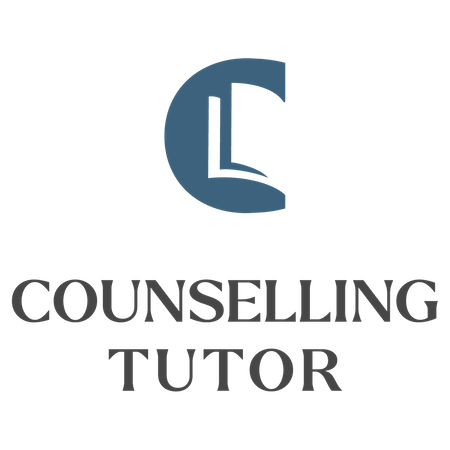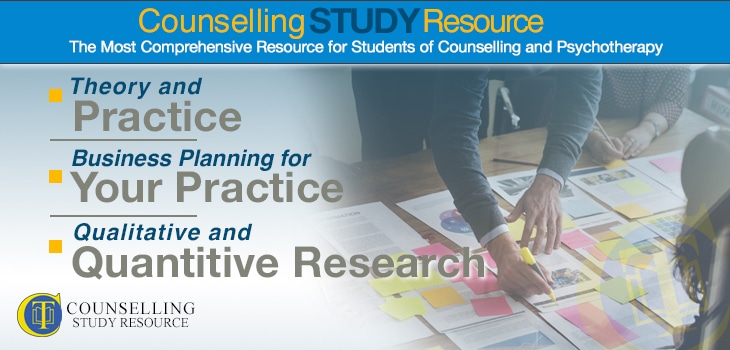018 – Theory and Practice – Five-Relationship Model – Business Planning – Qualitative and Quantitative Research
In episode 18 – as the Counselling Tutor Podcast comes of age! – Rory Lees-Oakes and Ken Kelly discuss how to deal with a mismatch between theory and practice. ‘Theory with Rory’ looks at Petruska Clarkson’s five-relationship model, while in ‘Person-Centred Business’, Ken provides a guide to stress-free business-planning. Last, the presenters explain the difference between quantitative and qualitative research.
Theory and Practice
Working with real clients is very different from working with peers in college, who are familiar with the concept of counselling, and understand the various boundaries (e.g. to respect time limits, and not to make doorknob disclosures). It is not uncommon for clients in the real world to appear not to fit so well with counselling theory.
Rory and Ken provide a number of tips on how to deal with this situation:
- Make sure you train on an experiential course (i.e. one that is taught face-to-face, and that includes skills practice).
- Be aware of other modalities than your own (e.g. psychodynamic and cognitive-behavioural); there are many different therapeutic modalities, each with a related but different set of theory.
- Treat theory as a guide only.
- Remember that having a client who appears not to fit with theory does not mean you are getting something wrong.
- Focus simply on being with the client the best you can; the therapeutic relationship is key.
Five-Relationship Model
South-African psychotherapist Petruska Clarkson developed a model of relationship-building that can inform both counselling and supervision relationships. Interested in Gestalt therapy, she came to the UK in the 1970s. Her model is based on integrative therapy, but is applicable to all modalities.
In the 1950s, Carl Rogers had written a paper entitled ‘The Necessary and Sufficient Conditions of Therapeutic Personality Change’, published in the Journal of Consulting Psychology. This introduced the idea that the therapeutic relationship is key, and three of the conditions – congruence, unconditional positive regard and empathy, which have subsequently become known as the ‘core conditions’ – have come to be accepted by practitioners of all modalities as vital to establishing this relationship.
In 1995, Clarkson wrote a book entitled The Therapeutic Relationship (revised in 2003).Clarkson talked about ‘intersubjective relationships’ (how we connect to others) and ‘intrapsychic relationships’ (how we connect to ourselves). Rory explains the five intersubjective relationships, and provides some real-life examples of these:
- The working alliance forms the basis of the client–therapist (or therapist–supervisor) relationship, and includes the contract. It focuses on building a shared understanding and foundation, so that if the relationship falters, both parties can return to this stage and try to repair it.
- The transferential/countertransferential relationship refers to the idea that we may remind a client of someone from their past, or vice versa, and the related feelings from the past may be transferred to the present, so affecting the therapeutic relationship. If this happens, it is important to explore the issue in supervision.
- The reparative/developmentally needed relationship is based on the client viewing the therapist as a parent figure to support them during the personal growth that takes place in therapy. This may be especially so for clients who experienced poor parenting as youngsters. In time, the client begins to trust their own judgement and so needs the therapist less (at which point therapy comes to an end).
- The person-to-person relationship draws on the work of Martin Buber regarding ‘I–Thou’ (as opposed to ‘I–It’) relationships – i.e. the development of a real emotional connection (which makes counselling a unique profession, differentiating it even from other caring professions).
- The transpersonal relationship is hard to define, but describes a spiritual connection between people.
Business Planning
Ken explains how to tackle the important exercise of business planning in a way that is not hard or time-consuming. He describes the key questions to think about and answer:
- What will be the name of your business?
- What is your vision for the business?
- What is your target market?
- What exactly do you sell?
- What makes your business different from others?
- How will you market your business?
- What are your goals, and how will you achieve them?
You can download Ken’s template to help you work through his process.
Qualitative and Quantitative Research
Qualitative research collects data that describes the quality of experience, while quantitative research gathers data relating to quantity (i.e. facts and figures). Each type of research has its pros and cons, and often the two can be combined for strong research results; a balance is important.
For example, quantitative research is good for measuring things, providing objective statistics, but can be narrow and requires very careful choice and phrasing of questions. Qualitative research is open-ended and potentially more flexible, but is time-consuming and may be subject to researcher bias.


